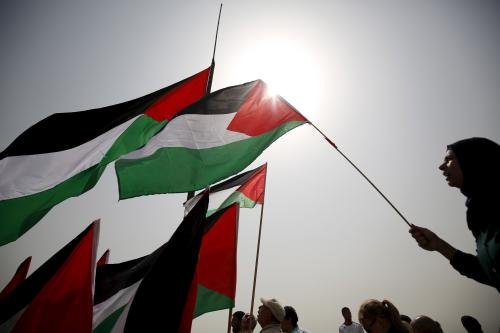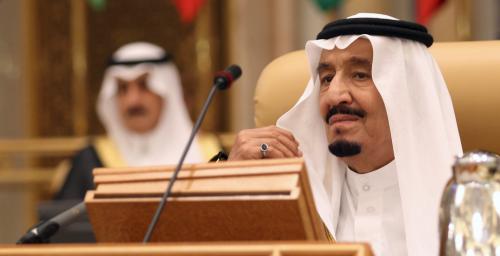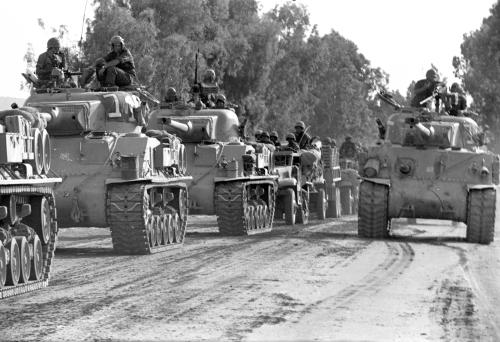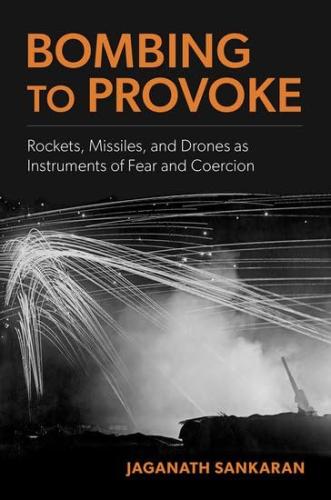 The 1967 War is rightly known, above all, for its political impact. Six days of fighting left the region’s map redrawn, its balance of power fundamentally altered, and its ascendant ideology—the secular nationalism of Gamal Abdel Nasser—in tatters. The Middle East would never be the same.
The 1967 War is rightly known, above all, for its political impact. Six days of fighting left the region’s map redrawn, its balance of power fundamentally altered, and its ascendant ideology—the secular nationalism of Gamal Abdel Nasser—in tatters. The Middle East would never be the same.
Yet the war didn’t just change the region’s politics. For Israel and its neighbors, the war also shifted the nature of armed conflict, too.
The war set in motion three shifts in particular.
First, Israel’s victory in 1967 began a shift away from interstate warfare. For two decades, from the 1948-1949 war on, Israel’s neighbors had sought to lay waste to the nascent Jewish state in the heart of the region. Israel’s victory in 1967 did not put an end to that goal, but the decisiveness of Israel’s victory—coupled with its successful recovery in the 1973 War—did prevent further efforts to achieve it.
Indeed, Figure 1 shows just how effective Israel’s military performance in 1967 and 1973 was in deterring future interstate wars:
 Figure 1 shows the cumulative battle deaths in interstate wars in Israel since 1948. Data taken from the PRIO Battle Deaths 2.0 dataset and UCDP Battle-Related Deaths 5.0 dataset.
Figure 1 shows the cumulative battle deaths in interstate wars in Israel since 1948. Data taken from the PRIO Battle Deaths 2.0 dataset and UCDP Battle-Related Deaths 5.0 dataset.
After 1973, the cumulative number of combatant battle deaths in Israel’s interstate wars flatlines. The trend reflects the fact that Israel’s neighbors never again attempted an all-out invasion. For Jordan, the 1967 War alone was enough to dissuade it from further aggression: as Ken Pollack has noted, after the war “the Jordanians recognized Israel’s military superiority and had no desire to repeat the experience of 1967.” For Egypt and Syria, by contrast, that recognition came a bit later. But in each case the losses incurred in 1967 and 1973 at the hands of the Israel Defense Forces—and particularly, contrary to popular perception, the IDF’s ground forces—convinced Israel’s neighbors that the potential costs of another conventional war with Israel were no longer worth the risk.
Yet if the 1967 War helped to establish a deterrent threat, it did little to resolve the fundamental animus against Israel itself. If anything, in fact, Israel’s success in 1967, and its subsequent military annexation of Gaza and the West Bank, only heightened it.
The second shift in conflict owes to that lingering hostility. Rather than cease fighting altogether, Israel and its opponents increasingly engaged in forms of “low-intensity conflict,” such as insurgency and counter-insurgency.
Figure 2 shows the immediate impact of 1967 on battle deaths in Israel’s domestic conflicts:
 Figure 2 shows the annual number of battle deaths in Israel’s domestic conflicts with non-state actors such as Fatah and the Palestine Liberation Organization (PLO). Data is taken from the PRIO Battle Deaths 2.0 dataset.
Figure 2 shows the annual number of battle deaths in Israel’s domestic conflicts with non-state actors such as Fatah and the Palestine Liberation Organization (PLO). Data is taken from the PRIO Battle Deaths 2.0 dataset.
As Figure 2 reveals, terrorist and insurgent activity were not altogether unknown in Israel prior to 1967. Yet afterwards that activity rose dramatically. By late August of 1967, Fatah was launching guerrilla operations from both within the West Bank and from Jordanian territory on the East Bank, and competing Palestinian factions, such as the Arab National Movement, soon followed suit. Although the initial insurgency was largely unsuccessful—by the end of 1967, Israel had mostly forced the insurgents’ leadership into exile, and by the mid-1970s, the attacks had dropped nearly to pre-war levels—it nonetheless established a pattern that would be repeated throughout Israel’s history.
Indeed, Figure 3 illustrates just how far-reaching that pattern would become:
 Figure 3 shows the annual number of battle deaths in Israel’s domestic conflicts with non-state actors. Data is taken from the PRIO Battle Deaths 2.0 dataset and UCDP Battle-Related Deaths 5.0 dataset.
Figure 3 shows the annual number of battle deaths in Israel’s domestic conflicts with non-state actors. Data is taken from the PRIO Battle Deaths 2.0 dataset and UCDP Battle-Related Deaths 5.0 dataset.
As the extended timeline shows, Israel would consistently suffer from low-intensity conflict throughout its modern history. Tragically, much of the worst violence directly relates to 1967: the 1st and 2nd Intifadas in the late 1980s and early 2000s, for instance, as well as Operation Cast Lead in 2008-2009, all occurred primarily in territories captured by Israel in 1967. However much the 1967 war helped to deter future interstate conflicts, the war thus also set the stage for domestic conflicts that have recurred with substantial frequency—and that Israel has struggled to contain.
Finally, the third shift concerned not how armed conflict took place, but instead who was doing the fighting.
In short, Israel’s decisive victory over Nasser in 1967 helped to clear the way for Islamist rebel groups throughout the region. The reigning ideology of the 1950s and 1960s, particularly in the post-colonial capitals of North Africa and the Middle East, was secular-nationalism—the spirited view that modern states could be built solely on national identities that transcended ethnic and religious ones. And as Mark Juergenmeyer has noted, “perhaps none exemplified this new spirit more than Gamal Abdel Nasser of Egypt.” However, the fact that Nasser came to symbolize secular-nationalism meant that Egypt’s defeat in 1967 significantly discredited the ideology overall. Coupled with the subsequent failures of secular regimes elsewhere, Nasser’s loss left an opening for Islamist rebel groups to gain greater popular legitimacy relative to secular ones.
As Figure 4 shows, it wasn’t long before Islamist groups took advantage of that opening.
Beginning in the late 1970s, the share of Islamist militant groups across the region rose rapidly:
 Figure 4 shows Islamist rebel groups as a percentage of all rebel groups in civil wars in MENA and Central/South Asia with 1000 deaths or more. Data taken from Gleditsch & Rudolfsen (2016).
Figure 4 shows Islamist rebel groups as a percentage of all rebel groups in civil wars in MENA and Central/South Asia with 1000 deaths or more. Data taken from Gleditsch & Rudolfsen (2016).
Whereas in 1967 there were no active Islamist rebel groups in the region, by the late 2000s, Islamist insurgents, typified by Hezbollah and Hamas, comprised the overwhelming majority of all rebel groups. To be sure, the rise in Islamist rebels owes to a broad array of factors. But one is the greater ease with which Islamist groups could mobilize once Nasser’s secular nationalist ideology had been discredited.
From the demise of Nasser to the rise in non-state actors in Israel, the 1967 War thus led to profound shifts in armed conflict in Israel and around the region. If the war still resonates, it’s at least in part because the volatile mix of insurgency and religious extremism continues to shape those conflicts today.






Commentary
How the 1967 War changed armed conflict in the Middle East
May 30, 2017